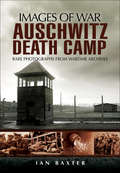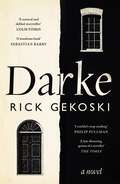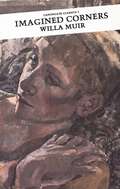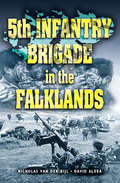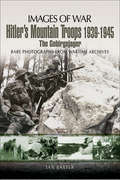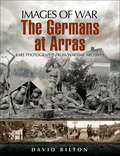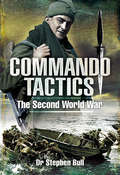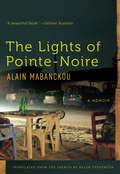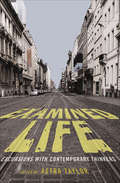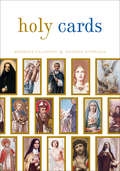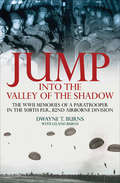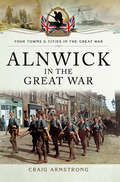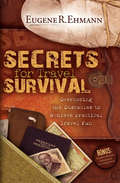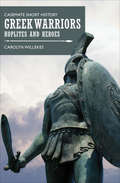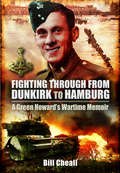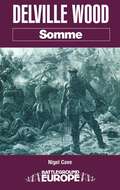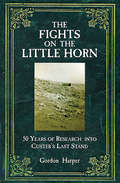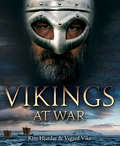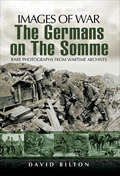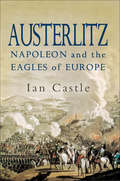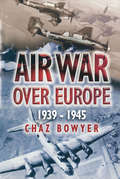- Table View
- List View
Auschwitz Death Camp: Rare Photographs from Wartime Archives (Images of War)
by Ian BaxterA World War II pictorial history detailing Nazi Germany&’s Auschwitz concentration camp, its monstrous creators, and what went on inside. The concentration camp at Auschwitz-Birkenau was the site of the single largest mass murder in history. Over one million mainly Jewish men, women, and children were murdered in its gas chambers. Countless more died as a result of disease and starvation. Auschwitz Death Camp is a chilling pictorial record of this infamous establishment. Using some 250 photographs together with detailed captions and accompanying text, it describes how Auschwitz evolved from a brutal labor camp at the beginning of the war into what was literally a factory of death. The images show how people lived, worked, and died at Auschwitz. The book covers the men who conceived and constructed this killing machine, and how the camp provided a vast labor pool for various industrial complexes erected in the vicinity. Auschwitz Death Camp is shocking proof of the magnitude of horror inflicted by the Nazis on innocent men, women, and children. Such evil should not be forgotten lest it reappear.
Jungvolk: The Story of a Boy Defending Hitler's Third Reich
by Wilhelm Gehlen Don Gregory&“An extraordinary account of a young boy caught up in the middle of a war . . . frank and even funny at times . . . utterly absorbing&” (Books Monthly). This is the wartime memoir of a boy named Will, who happened to be the nephew of the head of Nazi Germany&’s intelligence agency. The author, only ten years old when the war began, became a helper at the local Luftwaffe flak battery, fetching ammunition. It was exciting work for Will, a member of the &“Jungvolk,&” and by the end of the war, he had become expert at judging attacks. As fighter raids increased in frequency, he noted that the pilots became less skilled. Gehlen&’s town was repeatedly bombed, and he often had to help with the wreckage or to pull survivors from basements. He witnessed more death than a child ever should; nevertheless, his flak battery continued firing until US tanks were almost on top of the position. In this book, Gehlen provides an intimate glimpse of the chaos, horror, and black humor of life just behind the front lines. As seen through the eyes of a child who was expert in aircraft identification and bomb weights, food-rationing and tank types, one encounters a view of life inside Hitler&’s wartime Reich that is both fascinating and rare. &“Although the memories Gehlen shares are narrow, and offer little insight into the Reich itself, they&’re remarkable for the child&’s perspective they bring to bear on a warring country&’s ferocious struggle.&” —Publishers Weekly &“A real gem, a quiet tour de force . . . Despite its serious subject matter the book reads as an adventure story from start to finish.&” —Military Modelling
Darke
by Rick GekoskiThis critically acclaimed debut novel offers &“an original and bleakly funny portrait of grief&” in the singular mind and solitary life of its protagonist (The Economist). Shortlisted for The McKitterick Prize and The Author&’s Club Best First Novel Award Cranky and reclusive, ageing and widowed, Dr. James Darke has expelled himself from the world. He writes compulsively in his &‘coming of old age&’ journal; he eats little, drinks and smokes a lot; he tries to console himself with the wisdom of the great thinkers and poets, yet finds nothing but disappointment. And yet, cracks of light start to appear in his carefully managed darkness: the tender, bruised filaments of love for his daughter and grandson. With scalding prose, ruthless intelligence and an unforgettably vivid protagonist, Darke confronts some of humanity&’s greatest and most uncomfortable questions about how we choose to live, and to die.&“A supreme example of a natural and skilled storyteller.&”—Colm Toibin&“Surprising…with a warmth that is genuinely and unexpectedly moving.&”—The Guardian, UK
Imagined Corners (Canongate Classics)
by Willa MuirIn this stirring debut novel by the acclaimed Scottish author, a young woman struggles against the confines of early twentieth century British propriety. Novelist Willa Muir was an acute and acerbic observer with an intimate knowledge of the Scottish middle-class conventions she describes in her debut novel, Imagined Corners. In it, young Elizabeth Shand, newly married to the unstable but handsome Hector, finds herself in the social, intellectual and spiritual strait-jacket of small-town life in the early 20th century. The growing complexity of these entangled relationships is further heightened when her sister-in-law and namesake returns from Italy, sophisticated and freshly widowed. Through her, Elizabeth rediscovers her desire to face life honestly and intelligently. Reassessing her enforced life of petty vanities and delusion, she begins to consider new possibilities of personal and sexual freedom.
5th Infantry Brigade in the Falklands
by Nicholas van der Bijl David AldeaFor many people it was 3 Commando Brigade, commanded by Major General Julian Thompson, and made up of Royal Marines and Para's that recaptured the Falklands. Yet 5th Infantry Brigade played a key and until now little acknowledged role in this extraordinary saga. Cobbled together in haste (having been stripped of its assets to bring 3 Commando Brigade up to strength), it comprised principally of two Guards battalions (2nd Scots and 1st Welsh) and the Gurkhas. Many felt it was inadequately trained when it sailed from Southampton on the QE 2 and this view was given substance by early disasters such as the tragedy at Bluff Cove. Yet by the end, its contribution, of which Tumbledown is the best known, could not be denied. Why then was its commander (Brigadier Tony Wilson) so conspicuously ignored when the medals and decorations were handed out?
Terra Nova: The New World After Oil, Cars, and Suburbs
by Eric W. SandersonA look at what the American lifestyle has done to the environment—and how to move toward a better future. In the last century, three powerful forces—oil, cars, and suburbs—buoyed the American dream. Yet now, the quality of life in the United States is declining due to these same three forces. Our dependence on oil is a root cause of wars, recessions, and natural disasters. Cars consume an outsize share of our incomes and force us to squander time in traffic. Meanwhile, expensive, spread-out suburbs devour farmland—and in a vicious cycle, further entrench our reliance on cars and oil. In Terra Nova, conservation ecologist Eric W. Sanderson—the national bestselling author of Mannahatta—offers concrete steps toward a solution. He delves into natural history, architecture, chemistry, and politics, to show how the American relationship to nature has shaped our past, and how it can affect our future. Illustrated throughout with maps, charts, and infographics, Terra Nova demonstrates that it is indeed possible to achieve a better world. &“Sanderson commendably outlines &‘a new way of life . . . designed to sustain American prosperity, health, and freedom for generations to come.&’&” —Publishers Weekly
Hitler's Mountain Troops, 1939–1945: The Gebirgsjager (Images of War)
by Ian BaxterA pictorial history of the Nazi special forces group, their training, and the action they saw during World War II. Hitler&’s mountain troops or Gebirgsjager were a group of elite soldiers ready for battle, whatever the conditions. These mountain men were trained to ski, climb and endure long marches, survive appalling conditions and were given a role as crack shock troops. Yet many of the campaigns in which the Gebirgsjager fought were on level ground where they had little opportunity to demonstrate their unique skills. Instead, they were invariably employed as assault infantry in conventional battle, a role in which every individual trooper excelled, but not one for which they had been trained. They fought in virtually all theaters of World War II, notably on the Eastern Front, where operations took them into the Caucasus. The Gebirgsjager were proud to wear the Edelweiss, the famous badge that set them apart and distinguished them as Hitler&’s mountain men. This superb book shows the Gebirgsjager in training and action from Poland, Norway, and France, through Yugoslavia, the Eastern Front, and in the closing stages of the War.
The Germans at Arras: Rare Photographs from Wartime Archives (Images of War)
by David Bilton"During the Great War a German publisher produced a number of photographic books that are of considerable interest to the modern-day reader. These were based on the photographs taken by the German regiments that found themselves stationed there during the War. This, the first book, covers the Battle of Arras in 1917, one of the largest in the War.In addition to the introduction giving the historical context there are 350 photographs of the villages and towns, trenches, troop movements, cemeteries and dealing with civilians. These photos vividly convey what the areas of Lens, Arras, Bullecourt, Havrincourt, Cambrai, Douai were like under German occupation. This book is not just a memory-rich diary for the thousands of soldiers who fought there but also a valuable record of the period."
Commando Tactics: The Second World War
by Dr. Stephen BullBritish commandos are among the most celebrated soldiers of the Second World War. Their daring, ingenuity and bravery have given rise to an almost legendary reputation that makes it difficult to appreciate fully their role and their true value as fighting men.Stephen Bull, in this in-depth study of commando tactics and history, seeks to dispel the myths and the misunderstandings that surround them, and he places these elite troops of 70 years ago in the context of their times. He also demonstrates that the idea of the commando took time to develop and that commando operations were far from always successful. Commando tactics amphibious, mountain, close quarter were forged through the often-painful experience of raids and combined operations. And commando tactics and organization remained in a state of flux throughout the war as new situations and challenges arose.Stephen Bulls vivid account will be essential reading for anyone who is interested in commando fighting techniques and the early history of special forces.
The Lights of Pointe-Noire: A Memoir
by Alain MabanckouA dazzling meditation on home-coming and belonging from one of &“Africa&’s greatest writers&” and the Man Booker International Prize finalist (The Guardian). Alain Mabanckou left Congo in 1989, at the age of twenty-two, not to return until a quarter of a century later. When he finally came back to Pointe-Noire, a bustling port town on the Congo&’s southwestern coast, he found a country that in some ways had changed beyond recognition: The cinema where, as a child, Mabanckou gorged on glamorous American culture had become a Pentecostal church, and his secondary school has been renamed in honor of a previously despised colonial ruler. But many things remain unchanged, not least the swirling mythology of Congolese culture that still informs everyday life in Pointe-Noire. Now a decorated writer and an esteemed professor at UCLA, Mabanckou finds he can only look on as an outsider in the place where he grew up. As he delves into his childhood, into the life of his departed mother, and into the strange mix of belonging and absence that informs his return to the Republic of the Congo, his work recalls the writing of V. S. Naipaul and André Aciman, offering a startlingly fresh perspective on the pain of exile, the ghosts of memory, and the paths we take back home. Grand Prize Winner at the 2015 French Voices Awards &“This is a beautiful book, the past hauntingly reentered, the present truthfully faced, and the translation rises gorgeously to the challenge.&” —Salman Rushdie &“A tender, poetic chronicle of an exile&’s return.&” —Kirkus Reviews
Say It Loud!: Great Speeches on Civil Rights and African American Identity
by Catherine Ellis and Stephen Drury SmithFollowing Say It Plain, a collection of speeches that provides &“a sweeping perspective on evolving issues of black identity in the struggle for equality&” (Booklist). In &“full-throated public oratory, the kind that can stir the soul&”, Say It Plain collected and transcribed speeches by some of the twentieth century&’s leading African American cultural, literary, and political figures. Many of the speeches were never before available in printed form (Minneapolis Star-Tribune). Following the success of that groundbreaking volume, the Say It Loud! book adds new depth to the history of the modern struggle for racial equality and civil rights—focusing directly on the pivotal questions black America grappled with during the past four decades of resistance. With recordings unearthed from libraries and sound archives, and made widely available here for the first time, Say It Loud! includes powerful speeches by Malcolm X, Angela Davis, Martin Luther King Jr., James H. Cone, Toni Morrison, Colin Powell, and many others. Bringing the rich immediacy of the spoken word to a vital historical and intellectual tradition, Say It Loud! illuminates the diversity of ideas and arguments pulsing through the black freedom movement.
Examined Life: Excursions with Contemporary Thinkers
by Astra TaylorPhilosophy reconnects with daily life in these conversations with eight renowned thinkers—the uncut interviews from the documentary film Examined Life. Astra Taylor&’s documentary film Examined Life took philosophy out of the academy and into the streets, reminding us that great ideas are born through profound engagement with the hustle and bustle of everyday life, not in isolation from it. This companion volume features the complete and uncut interviews with eight influential philosophers, all conducted while on the move through public spaces that resonate with their ideas. Slavoj Žižek ponders the purpose of ecology inside a London garbage dump. Peter Singer&’s thoughts on the ethics of consumption are amplified against the backdrop of Fifth Avenue&’s posh boutiques. Michael Hardt ponders the nature of revolution while surrounded by symbols of wealth and leisure. Judith Butler and a friend stroll through San Francisco&’s Mission District, questioning our culture&’s fixation on individualism. And while driving through Manhattan, Cornel West—perhaps America&’s best-known public intellectual—compares philosophy to jazz and blues, reminding us how intense and invigorating the life of the mind can be. Offering exclusive moments with great thinkers in fields ranging from moral philosophy to cultural theory to gender studies, Examined Life reveals philosophy&’s power to transform the way we see the world around us and to imagine our place within it.
Holy Cards: A Feast Of Holy Cards
by Barbara Calamari Sandra DiPasquaA treasury of the devotional art that has comforted and inspired millions of Catholics—portraying a remarkable gallery of saints. Often used in daily rituals or given out at significant life events such as wakes and funerals, communions and confirmations, the holy card can be appreciated as both a religious tradition and a beautiful work of folk art. This comprehensive volume offers a richly illustrated overview, organized thematically, along with brief biographies and attributes of prophets and angels, disciples and evangelists, hermits and visionaries, martyrs and mystics—in exquisite depictions that run the gamut from dramatic and disturbing to moving and comforting. Including detailed explanations of the often-enigmatic symbolism found in these unique keepsakes, Holy Cards is a compendium that will fascinate anyone who enjoys the artistic beauty for which the Roman Catholic Church is renowned.
Jump into the Valley of the Shadow: Into the Valley of the Shadow
by Dwayne T. Burns Leland BurnsA paratrooper&’s memoir of survival and close-quarters combat in WWII: &“Well worth reading&” (Flight Journal). When Dwayne Burns turned eighteen, he decided he wanted to fight alongside America&’s best. He joined the paratroopers and was assigned to the 508th Regiment of the 82nd Airborne Division. Little did he suspect that a year later he&’d be soaring in a flak-riddled C-47 over Normandy, part of the very spearhead of the Allied drive to seize back Europe. Burns landed behind German lines during the dark early hours of D-Day and gradually found other survivors of his division. The paratroopers fought on every side in a confused running battle through the hedgerows, finally making a stand in a surrounded farmhouse. With one room reserved for their growing piles of corpses, the paratroopers held their ground until finally relieved by infantry advancing from the beaches. After being pulled out of Normandy, the airborne troops were launched into Holland as part of Montgomery&’s plan to gain a bridgehead across the Rhine. This daytime jump was less confused than the nocturnal one, but there were more Germans than expected and fewer Allied forces in support. It was another maelstrom of point-blank combat in all directions, and though the 82nd achieved its objectives, the campaign as a whole achieved little but casualties. The 82nd had hardly refilled with replacements when the Germans broke through the US front in the Ardennes. The 82nd&’s paratroopers were put aboard trucks and hastened to stand in the way of the panzer onslaught. Passing through Bastogne, they went farther north to St. Vith, where the US 7th Armored and other divisions were reeling. The 82nd held its own with quickly assembled defense perimeters, allowing other units to escape. After beating off massive attacks by the German SS, the paratroopers were disgusted to hear that they, too, had been ordered to retreat. They didn&’t feel they needed to, but Monty was determined to &“tidy up the battlefield.&” On January 3, they counterattacked through the freezing hills, sealing off the Bulge and pursuing the Germans back into the Reich. In this work, Dwayne Burns, assisted by his son Leland (US Army, 1975–79), not only relates the chaos of combat but the intimate thinking of a young soldier thrust into the center of several of history&’s greatest battles. His memories provide a fascinating insight into the reality of close-quarters combat.
Alnwick in the Great War
by Craig ArmstrongAs a market town and one of the seats of government of the county authority, Alnwick played a key role in the coordination of Northumberlands war effort. With a wide rural hinterland, the town was considerably important in the production and dispersal of food, which was vital to the war effort. As the home of the Duke of Northumberland, the town had a hugely influential role in the overall Northumbrian war effort from civilian affairs to military recruitment.The town shared a proud tradition of military service with the wider region, and this was reflected in the huge numbers of Alnwick men and women who came forward for service in the military or in roles such as nursing. The town was a regional recruitment centre and hosted its own unit of the 1/7th (Territorial) Battalion, Northumberland Fusiliers, as well as other military units. From 1915, Alnwick was also one of the largest infantry training bases in the north of England. Many of the locally raised Pals Battalions, which were raised in the north, received their training here. For those left behind in Alnwick, the war was a time of worry and hardship, however others saw the business opportunities. This book includes accounts of the struggle that local families faced in coping with rising wartime prices, longer working hours and endless worry, sometimes in the face of accusations of drunkenness or idleness from the authorities and unfair criticism of the rural districts recruiting record.Despite these hardships, the people of Alnwick provided incredible charitable support right up until the end of the war, in addition to their normal efforts. Several military hospitals were set up in the town and surrounding area, with the training base later becoming a recuperation base for injured soldiers. These momentous efforts are explained throughout this compelling book, which is a testimony to the bravery, self-sacrifice and determination of the people of Alnwick during the Great War.
Secrets for Travel Survival: Overcoming the Obstacles to Achieve Practical Travel Fun
by Eugene R. EhmannLeave the stress and anxiety behind, and learn to enjoy traveling again with these expert tips. Travel can be an adventure, but it can also be overwhelming. Written by an experienced world traveler who also entertainingly recounts his own journeys, this guide can help you feel relaxed and ready to go, whether you&’re on the road for business or pleasure. Learn: * How to prepare for your trip to ensure the results you want * How to plan your trip for the smoothest outcome * How to best move through airport security * How to visit or work in foreign countries where you know little or no local language * How to be and feel safe and secure . . . and still have fun!
Greek Warriors: Hoplites and Heroes (Casemate Short History)
by Carolyn WillekesA concise, enlightening portrait of the men who fought in the ancient battles we still study today. Thermopylae. Marathon. Though fought 2,500 years ago in ancient Greece, the names of these battles are more familiar to many than battles fought in the last half-century. But our concept of the men who fought in these battles may be more a product of Hollywood than Greece. Shaped by the landscape in which they fought, the warriors of ancient Greece were mainly heavy infantry. While Bronze Age Greeks fought as individuals, for personal glory, the soldiers of the classical city-states fought as hoplites, armed with long spears and large shields, in an organized formation called the phalanx. As well as fighting among themselves, as in the notable thirty-year Peloponnesian War between Athens and Sparta immortalized by Thucydides, the city-states came together to fight outside threats. The Persian Wars lasted nearly half a century and saw the Greek armies come together to fend off several massive Persian forces, both on land and at sea. This book sketches the change from heroic to hoplite warfare, and discusses the equipment and training of both the citizen soldiers of most Greek cities and the professional soldiers of Sparta.
The Battle of Neuve Chapelle (Battleground French Flanders)
by Geoff BridgerA history of the World War I engagement between British and German forces in northern France, and a visitor’s guide to the battlefield site.Neuve Chapelle, a lost battlefield, is now opened up for the explorer to learn more about the actions that took place there.In early 1915, the British decided to take the offensive for the first time in the war against German positions in Northern France. The initial objective was a bulge, about one mile across, in their lines at Neuve.Events which took place here early in 1915 are described in detail and show why this almost forgotten battle set the course of the war.
Fighting Through from Dunkirk to Hamburg: A Green Howard's Wartime Memoir
by Bill CheallA British infantryman shares his harrowing story of life on the frontlines of WWII, from the North African Campaign to the invasion of Germany. In April 1939, when Bill Cheall joined the famous Yorkshire infantry regiment known as the Green Howards, he could not have imagined the drama, trauma, rewards and anguish that awaited him. But he recounts it all here, in this vivid memoir of service and courage under fire. As a Green Howard, Cheall was on the receiving end of the Nazis' Blitzkrieg and was evacuated exhausted. Then, courtesy of the Queen Mary, he shipped off to North Africa as part of Field Marshal Bernard Montgomery's Eight Army. After their victory in Tunisia, Cheall went on to the invasion of Sicily. The Green Howards then returned to England to be in the vanguard of the Normandy Landings on Gold Beach—where Cheall was wounded. Once he recovered, Cheall returned to the war zone and finished the war as a Regimental Policeman in occupied Germany. It is a remarkable story told with modesty, humor, and an eye for detail.
Delville Wood: Somme (Battleground Europe)
by Nigel CaveAlmost every British regiment saw action in 'Devil's' Wood at some stage in the long Somme summer. This book examines some of the incidents and individuals who contributed to the history of the British Army and Delville Wood.
The Fights on the Little Horn: 50 Years of Research into Custer's Last Stand
by Gordon HarperWinner of the John Carroll Award and the G. Joseph Sills Jr. Book Award. A deeply researched work on the infamous 1876 battle, filled with new discoveries. This remarkable book synthesizes a lifetime of in-depth research into one of America&’s most storied disasters, the defeat of Custer&’s 7th Cavalry at the hands of the Sioux and Cheyenne, as well as the complete annihilation of that part of the cavalry led by Custer himself. The author, Gordon Harper, spent countless hours on the battlefield itself, as well as researching every iota of evidence of the fight from both sides, white and Indian. He was thus able to recreate every step of the battle as authoritatively as anyone could, dispelling myths and falsehoods along the way. When he passed away in 2009, he left nearly two million words of original research and writing, and in this book, his work has been condensed for the general public to observe his key findings and the crux of his narrative on the exact course of the battle. One of his first observations is that the fight took place along the Little Horn River—its junction with the Big Horn was several miles away—so the term for the battle, &“Little Big Horn&” has always been a misnomer. He precisely traces the mysterious activities of Benteen&’s battalion on that fateful day, and why it couldn&’t come to Custer&’s reinforcement. He describes Reno&’s desperate fight in unprecedented depth, as well as how that unnerved officer benefited from the unexpected heroism of many of his men. Indian accounts, ever-present throughout this book, come to the fore especially during Custer&’s part of the fight, because no white soldier survived it. However, analysis of the forensic evidence—like tracking cartridges and bullets discovered on the battlefield, plus the locations of bodies—assist in drawing an accurate scenario of how the final scene unfolded. It may indeed be clearer now than it was to the doomed 7th Cavalrymen at the time, who, through the dust and smoke and Indians seeming to rise by hundreds from the ground, only gradually realized the extent of the disaster. Of additional interest is the narrative of the battlefield after the fight, when successive burial teams had to be dispatched for the gruesome task because prior ones invariably did a poor job. Though the author is no longer with us, his daughter Tori Harper, along with historians Gordon Richard and Monte Akers, have done yeoman&’s work in preserving his valuable research for the public. &“Having read and studied several previous books on the Custer Battle, I was hoping that something new would emerge and I was not disappointed . . . certainly a book that one cannot put down.&” —Norman Franks, author of Ton-Up Lancs and Under the Guns of the Red Baron
Vikings at War
by Kim Hjardar Vegard VikeAn illustrated guide to Viking warfare from strategy and weapons to culture and tradition: &“a very excellent introduction to the Viking age as a whole&” (Justin Pollard, historical consultant for the Amazon television series Vikings). From the time when sailing was first introduced to Scandinavia, Vikings reached virtually every corner of Europe and even America with their raids and conquests. Wherever Viking ships roamed, enormous suffering followed in their wake, but the encounters between cultures also brought immense change to both European and Nordic societies. In Vikings at War, historian Kim Hjardar presents a comprehensive overview of Viking weapons technology, military traditions and tactics, offensive and defensive strategies, fortifications, ships, and command structure. The most crucial element of the Viking&’s success was their strategy of arriving by sea, attacking with great force, and withdrawing quickly. In their militarized society, honor was everything, and ruining one&’s posthumous reputation was considered worse than death itself. Vikings at War features more than 380 color illustrations, including beautiful reconstruction drawings, maps, cross-section drawings of ships, line-drawings of fortifications, battle plan reconstructions, and photos of surviving artifacts, including weapons and jewelry. Winner of Norway&’s Saga Prize, Vikings at War is now available in English with this new translation. &“A magnificent piece of work [that] I&’d recommend to anyone with an interest in the Viking period.&” —Justin Pollard, historical consultant for the Amazon television series Vikings
The Germans on the Somme: Rare Photographs from Wartime Archives (Images of War)
by David BiltonThis highly illustrated book covers the activities of the German Army on the River Somme throughout the long years of The Great War. The initial fighting in 1914 was against the French prior to the arrival of the British Army. The 1916 Allied Offensive eventually resulted in the German withdrawal but only at a terrible cost to both sides. The 1918 Kaiserschlacht saw the Germans return, albeit briefly. Each phase is covered from the German perspective using primary and secondary sources. In addition to the wealth of splendid/fully captioned photographs, there is an authoritative general text and a useful chronological order of events. Being arguably the most evocative area in British military history, much has been written on the Somme. What makes this splendid book so different is the author's successful attempt to view events through the eyes of our adversaries.
Austerlitz: Napoleon and The Eagles of Europe
by Ian CastleIn this authoritative and beautifully illustrated new account of Napoleon's greatest victory and the campaign that preceded it, Ian Castle sheds new light on the actions of the commanders and questions the assumptions—and explores the myths—that have shaped our understanding of the event ever since. His account follows every twist and turn of a war that was fought out across central Europe two centuries ago. In particular he reconstructs the course of the action in every sector of the Austerlitz battlefield, using French, Austrian and Russian records, and re-evaluates the place of the battle in the history and mythology of the Napoleonic era.
Air War Over Europe, 1939–1945: 1939-1945
by Chaz BowyerChaz Bowyer, arguably the most authoritative air historian of his generation, tackles the broad sweep of air operations in the European theatre in this book. Initially, the Luftwaffe attempted to dominate the skies, and very nearly succeeded. The valiant defence of the UK by the RAF in the Battle of Britain ranks among the greatest feats of arms in our country's history. The development of aircraft types and the descriptions of the actions that they and their pilots and crew fought make for great reading.
